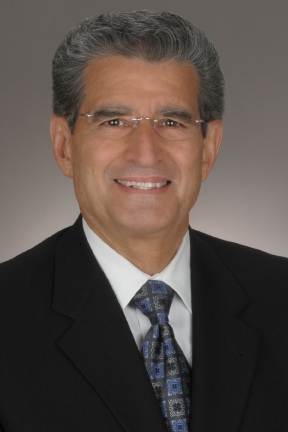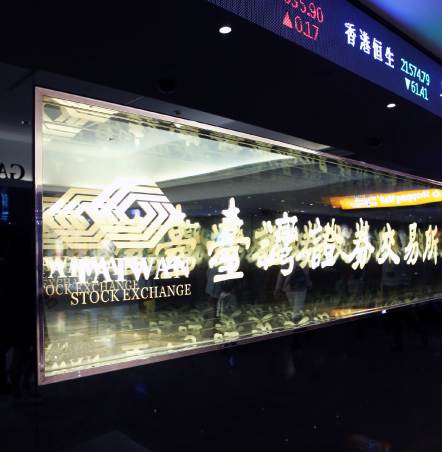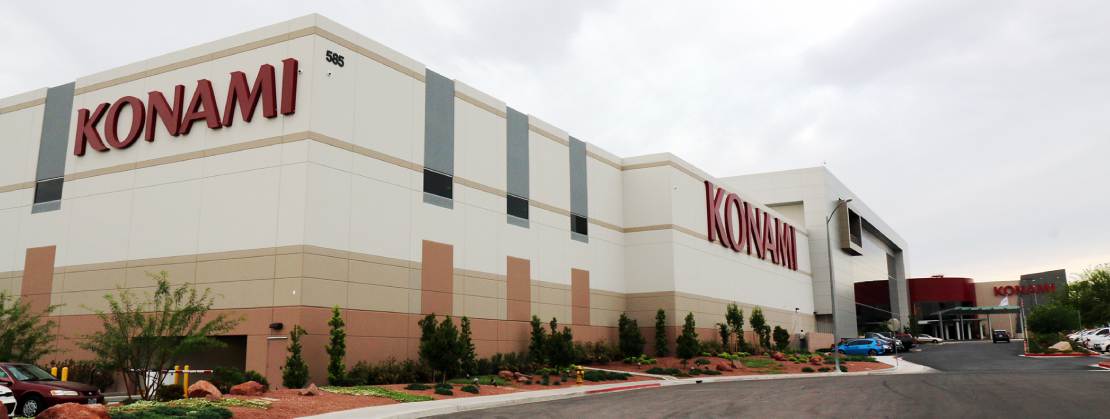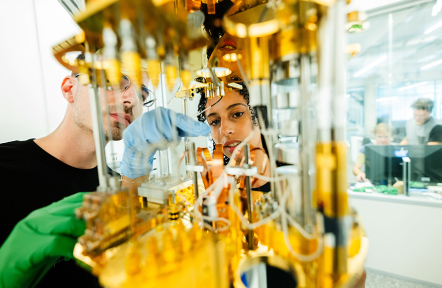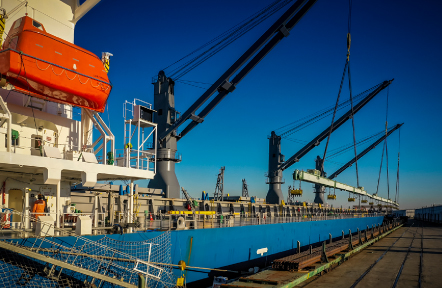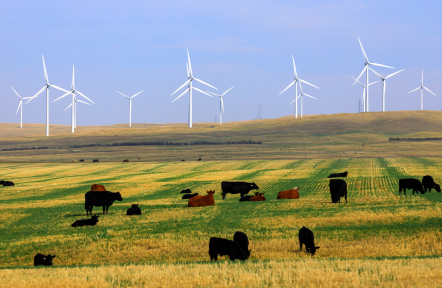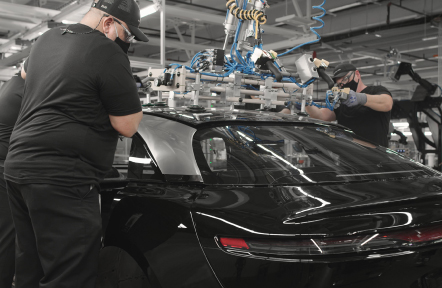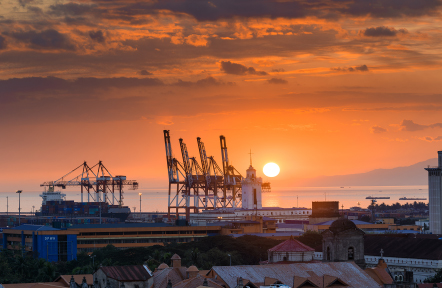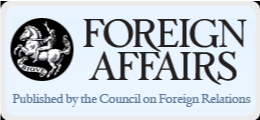
The upcoming report, due to be published in the November/December 2014 edition of Foreign Affairs, will highlight opportunities in Taiwan for overseas collaboration, investment and trade.
Philippe Le Saux and Elizabeth Arcega update from the field. Follow Philippe's and Elizabeth's real time updates here and here
_____
August 18:
 Is it time to pay attention to Taiwan?
Is it time to pay attention to Taiwan?
Eversince the Obama administration began its “Pivot to East Asia” in 2012, the United States has stepped up efforts to strengthen bilateral and multilateral ties with the region’s emerging powers, including China.
With much attention focused on enhancing relations with Beijing, policymakers in Washington tread carefully to avoid ruffling mainland China’s sensibilities, particuarly with regards to the Taiwan issue. While cross-strait relations have undoubtedly improved under the current Taiwanese leadership, the island nation has found itself relegated to the the back seat.
Meanwhile, Taiwan has intesified efforts to assert its economic strength beyond its 23-million person market. As it stands, Taiwan plays an essential role in the global supply chain, as it serves as a major supplier to the world’s top technology brands. A heavy reliance on foreign trade, while having yielded positive results, has also become a double-edged sword. In an interview with the ROC-USA Business Council earlier this week, Chairman CY Wang revealed that foreign trade has accounted for seventy-six percent of Taiwan’s GDP.
Let us now remind ourselves that while Taiwan is a member of the World Trade Organization (WTO), it is in a paradoxical position of having full capacity to sign bilateral Free Trade Agreements (FTAs) while still being such an integral cog of global trade. As a result, Taiwan has been forced to find creative ways of fueling its economic growth. Enter Mainland China.
While history shows a deeply-rooted connection between Taiwan and the United States, some American policymakers have occasionally showed reluctance to engage the Taiwan issue over fears of reproach from Beijing. As mentioned in my past blog posts on this subject, Taiwan adopted a policy of rapprochement towards mainland China, which yielded the breakthrough Economic Cooperation Framework Agreement (ECFA) and discussions on freer of cross-strait trade. Taiwan is presently one of the largest investors in mainland China. It is also important to note that Taiwanese-owned factories contribute significantly to the mainland' China's exports to the United States, the bulk of which serves as the backbone for the AmericantTech revolution.
So, the strategic importance of Taiwan may still be undervalued by policymakers in the United States. All factors considered, shouldn’t Taiwan be invited to join the Trans Pacific Partnership (TPP)?
On the other hand, some segments of the private sector have not lacked in recognizing Taiwan’s value. Logistics powerhouse DHL, for example, has enjoyed four decades of success in Taiwan. An interview last week with DHL Taiwan Managing Director Chee Yaw Chek revealed that they continue to increase their investment there, as the island is considered an important part of the company’s regional growth strategy. The same is true for American semiconductor manufacturer Micron Technology, which has become one of the largest foreign investors in Taiwan through a highly successful joint venture, Inotera Corporation. These are just a few of the many examples of foreign investors showing clear excitement and commitment to Taiwan’s potential.
Perhaps it’s Washington’s turn to start paying more attention? -PLS
_____
August 8:
TAIWAN TOO SMALL FOR YOU? THINK AGAIN.
When considering investing in Taiwan, your average U.S.-based decisionmaker would argue that “Taiwan is too small”. On paper, this island of 23 million people is tiny next to the nearly 1.4 billion consumers in mainland China, the 1.3 billion in India, and even the 240 million in Indonesia. But, astute businessmen consider more factors than just size and scale. This line of thinking begs the question: “If Taiwan is so small, why should I do business there?”
Here are a few thoughts I gathered within the past week alone:
The Mainland China/Taiwan Dynamic
As I mentioned in a recent blog post, Taiwan’s policy of rapprochement towards mainland China has created a whole new dynamic in cross-strait relations. The Economic Cooperation Framework Agreement (ECFA), signed in 2010, stands as the most significant agreement between the two sides since 1949. The significant boost in bilateral trade and investment that the agreement set in motion has led to an expansion in other fields. The Cross-Strait Service Trade Agreement, signed in 2013 but still unratified by Taiwanese legislature, aims to further liberalize trade in services between both sides. As early as last week, representatives from China and Taiwan reached an agreement to restart formal negotiations on a free trade agreement that would eliminate tax on the vast majority of goods.
All these developments have provided Taiwan with a very unique position vis-à-vis the West. Culturally-speaking, Taiwan’s history has shaped the country into a more concentrated version of the mainland, with most of mainland provinces represented within Taiwan’s population in some way. This similarity in culture presents enormous opportunity for marketing and business development that is too often undervalued in the United States. The common saying is “if you are successful in Taiwan, you will succeed in the mainland”. From the marketing and product development perspective, Taiwan’s smaller market provides an excellent opportunity for companies to test certain products before rolling them out in mainland China. A conversation this week with Ford Lio Ho Motor Company CEO Thomas Fann revealed that the American automaker, present in Taiwan for over four decades now, greatly values what its Taiwanese operations contributes to regional operations. While many have viewed Taiwan’s size as a weakness, Fann stressed that the island’s more manageable scale is in fact a strength in so far as testing out pilot projects before rolling them out in the mainland.
Furthermore, what many still undervalue is that Taiwan is the largest foreign investor and employer in mainland China. With that in mind, there is something to be said about the opportunity to build relationships in Taiwan in order to expand those ties into the mainland. Pacific Sogo Department Stores, which contributes thirty-percent of total retail sales on the island, through Chairperson Sophia Huang, shared with us its open attitude that the retail giant has in exploring strategic alliances with American brands. With nine stores in Taiwan and ten stores in mainland China, the potential for business development should be difficult to ignore.
Quality of Opportunities
While scale in Taiwan may be a concern for some, a closer look reveals that there are industries that totally refute that thinking. Let’s consider energy.

Our meeting this week with China Petroleum Corporation (CPC) Chairman Sheng-Chung Lin revealed that Taiwan is in fact the world’s sixth-largest importer of Liquefied Natural Gas (LNG). The state-owned petroleum, natural gas, and gasoline company in fact recently signed a long-term agreement with French giant GDF Suez to import 800,000 tons per year of LNG (including shale gas), which is to be sourced from the Cameron LNG plant in the United States.
Chairman Lin also shared CPC’s willingness to explore enhanced relationships in the United States. As it stands, CPC has a wholly-owned subsidiary in Texas that is pursuing investment opportunities, particularly in mining. Chairman Lin expressed appreciation for the positive and long-standing relationship that CPC has maintained with Exxon Mobil in projects all over the world.

Similarly immense opportunities exist within the financial sector. In an interview last week, Bank of Taiwan Chairperson Catherine Lee explained to us that Taiwan finds itself in an excellent position to benefit from the growing interest in the Chinese renminbi as the country stands shoulder to shoulder with Hong Kong and Singapore as one the region’s offshore renminbi centers.
Given Taiwan’s deep involvement in manufacturing activities in the mainland, the enormity of the opportunity for renminbi financial products and role that Taiwan can play serving as a bridge for investors cannot be understated.
What is clear is this: Many US businesses, to this day, undervalue what Taiwan is capable of bringing to the table. With such a wealth of opportunity, this article hardly scratches the surface of Taiwan's merits a partner for regional and global business development.
I look forward to learning more and sharing that acquired knowledge with all of you. Stay tuned. - PLS
_____
August 1:
Hsinchu – Taiwan’s Silicon Valley?
Located at about 85 kilometers from Taipei, and accessible in 30 minutes from the capital via the High Speed Rail, Hsinchu is a hotbed for technology and innovation. Home to the Hsinchu Science Park, National Chiao Tung University and National Tsing Hua University, this aptly-twinned city of Cupertino in Silicon Valley significantly contributes to Taiwan’s crucial role in the global development of technology.

Covering a developed area of 1,342 hectares, the Hsinchu Science Park (HSP) accommodates over 470 companies and more than 150,000 employees, while generating an excess of US$ 35 billion in sales revenues in the past 3 years alone.
Established in 1980, HSP currently has six satellite locations, namely Hsinchu, Jhunan, Tongluo, Longtan, Hsinchu Biomedical Science Park and Yilan. Best known for superior capability for contract manufacturing and design, many of Taiwan’s top original equipment manufacturers (OEM) and original design manufacturers (ODM) operate out of the park, thereby occupying a crucial space in the world’s supply chain. Many of the world’s top brands, from Sony to Apple, source crucial components from Taiwanese companies. The country has also been a global leader in optoelectronics and LCD panel industries, both industries also being heavily represented within HSP.
When it comes to science parks, Stanford University in California is widely credited for starting the world’s first science park in 1951. Over sixty years later, the impact of Stanford’s vision paved the way for the large cluster known today as Silicon Valley, the leading global source for innovation and technology. In many ways, the symbiotic relationship between academe and industry in California through the years reshaped science, research and invention, and combined it with entrepreneurship and business savvy, thereby leading a global revolution that is ushering a whole new era of possibilities around the world. HSP shares a similarly strong connection with the two world-class Universities within its vicinity.

National Chiao Tung University (NCTU) was originally founded in Shanghai in 1896 under the name of Nanyang College. It shares the same origin as the Jiaotong universities in mainland China. Since its re-establishment in Hsinchu in 1958, NCTU has been a major contributor to the growth of HSP and the technological advances that have occurred there. Boasting eight of its own elite research centers covering fields ranging from nanoelectronics, biomedical electronics and brain research, NCTU has created an environment conducive to international research and interdisciplinary academic research, resulting in the highest local/international student ratio among Taiwanese universities. NCTU has also taken steps towards adapting to the world that surrounds it by launching a venture/innovation program, and International Semiconductors College, and a new college of law that specializes on intellectual property law.

For its part, National Tsing Hua University (NTHU) celebrated its 103rd year of existence this year, and 58th since its reestablishment in Taiwan. With 17 advanced research centers, NTHU is heavily involved in promoting cutting-edge research and interdisciplinary cooperation between various fields. The university built the first 3D drosophila brain database in the world, and are undertaking research on the causes of Alzheimer's disease, among others. With existing industrial relationships that extend beyond Taiwan, with the likes of General Electric, Microsoft and the United States Army, NTHU continues to pursue the development of international linkages while maintaining a high-level of tangible output. NTHU, for example, has the highest number of US-registered patents, with 101 such patents granted in 2014.
Surrounded by seven national research centers and laboratories, both universities are deeply ingrained in Taiwan’s technological advancement infrastructure and are poised to continue their strong contributions to Taiwan’s transition from an efficiency-driven economy to one driven by innovation, strongly influenced by the success of their Northern California counterparts.
What lies ahead for Taiwan’s vision of moving up the global supply chain? While nobody can say with utmost certainty how the future will look, the symbiotic relationship between HSP and its two neighboring universities will undeniably play a central role in it. Ultimately, the students themselves hold the key, and the rest of the world needs to recognize the contributions of this small island to all the technology that surrounds us.
The next time you pick up your iPhone or iPad, you can think of Cupertino, or you can think of Taiwan. - PLS
_____
July 28:
After last week’s insightful meetings with representatives in the Taiwan biotech industry, (namely, Dr. Daniel Cheng, Director General of Biotechnology & Pharmaceutical Industries Promotion Office and Dr. Johnsee Lee, Chairman of both the Development Center for Biotechnology and Taiwan Bio Industry Organization), we met with the players in the industry this week. Companies such as OBI Pharma, Inc. and Medigen Biotechnology, Corp. are leading the way in the industry’s pursuit of the first globally commercialized Taiwan branded drug. While the exit strategy of many companies in this industry consists of selling their products to foreign pharmaceutical companies for commercialization, the goal of OBI Pharma and Medigen is quite different as they look to internationally market and distribute their products under a Taiwanese brand. OBI Pharma’s drug targets breast cancer, while Medigen’s drug focuses on liver cancer. Both companies are building towards a globally-recognized Taiwan brand.
EirGenix, Inc. is a spin-off company of Development Center for Biotechnology established in 2012. Although a relatively new company, EirGenix is making a name for itself. Minister of Economic Affairs, Mr. Chia-Juch Chang has high expectations for the company, publicly expressing his hope for it to be for biotech what Taiwan Semiconductor Manufacturing Company (TSMC) is for semiconductors. EirGenix is one of the rare companies in its field. It is a contract development and manufacturing organization, supporting clients in the development and manufacturing of products. Looking to increase its portfolio of foreign clients, Dr. Lee-Cheng Liu, president and CEO, has attended numerous conventions in Asia, Europe, and North America.
During the latter part of the week, the team attended BioTaiwan 2014, an exhibition and conference organized by the Taiwan Bio Industry Organization. Through the four-day event, we caught a glimpse of the vast scope of biotechnology in Taiwan, ranging from healthcare to medical cosmetology.

This week, the team also met with the top university in the country — National Taiwan University (NTU). The oldest university in Taiwan, NTU has continued to grow tremendously over the years. President Pan-Chyr Yang mentioned that the university currently has 33,000 students with a nearly equal undergraduate to graduate student ratio. With five international research centers, NTU has notable research in medicine and robotics among others. Among the universities we have met with so far, the main theme the team has been seeing is the importance given on applied research and developing academia-industry linkages in Taiwan.

Earlier in July, the Green Trade Project Office brought a delegation of Taiwanese exhibitors to the Intersolar North America held in San Francisco, USA. The Green Trade Project Office revealed that Taiwan is a major player in the solar industry, as it is the second largest solar cell production region in the world. BIG SUN Energy Technology Inc. was the first company we met with in the renewable energy business. Although its main business is solar cells, BIG SUN’s newest product is its solar tracker, an invention of Chairman Summer Luo. Compared to the traditional solar tracker, BIG SUN’s solar tracker has 30% more output, with significantly lowers long-term costs. Equally impressive is the solar tracker’s durability, having zero defects among the 200 units that have been deployed so far. With BIG SUN’s latest product, its future looks bright.
Week after week, the team has been getting a clearer picture of Taiwan’s strongest industries. Despite that, there are still many fields that we have yet to explore as we continue to learn what Taiwan has to offer. - EA
_____
July 25:
After a couple of months of preparation, we finally got our chance to meet Taiwan’s Minister of Foreign Affairs, Mr. David Lin. Having featured Minister Lin’s predecessor in the previous Global Media/Foreign Affairs Taiwan Special Business Report back in 2011, we were eager to get his take on how things have progressed since then.

From the onset, we were greeted with enthusiasm, as Minister Lin, a Georgetown University School of Foreign Service alum, shared that he is a regular reader of Foreign Affairs. He also expressed his full support for the work that our team was doing in putting together the 2014 Taiwan Special Business Report, a sentiment that was deeply appreciated by our team.
As we delved into the topic at hand, Minister Lin spoke highly of the current state of relations between Taiwan and the United States, citing the important role that Taiwan can play in the United States’ foreign policy pivot towards Asia.
He mentioned Taiwan’s policy of rapprochement towards mainland China and its impact on creating a whole new dynamic in cross-strait relations. With possible flash points developing in the East and South China Seas, as well as potential flash-points in the Korean Peninsula, Minister Lin stressed that the Taiwan Strait has successfully removed itself from the list of notable areas of concern in the region. As Taiwan continues to improve its ties with mainland China, Minister Lin also highlighted the many successes that Taiwan has had in enhancing its relations with Japan, Australia and the ASEAN countries. All of these developments, according to Minster Lin, illustrate the important role that Taiwan can play as a formidable and close ally to the United States in the Asia-Pacific Region.
Minster Lin explained that Taiwan is in an excellent position to serve as a bridge between the United States and the Asia-Pacific region, including mainland China. With that objective in mind, Taiwan has sought an increased role on the international stage, as it continues to strengthen its image as a reliable partner in the region.
Within that context, Minister Lin expressed optimism that the world would further recognize the significant contributions of Taiwan to the international community, as he looks forward to deeper regional and global economic integration for Taiwan.
Certainly, the Global Media/Foreign Affairs’ 2014 Taiwan Special Business Report will contribute towards communicating to the world why Taiwan matters and what this island has to offer. - PLS
_____
July 18:
As the team pursuestto understand the nuances of Taiwan’s economy and the U.S.-Taiwan dynamic, our sixth week in the country has further solidified our positive outlook.
Our interview with the minister of education was followed by a very interesting discussion with Tatung University President Dr. Ming-Guo Her. As the minister spoke at length about the need for more industry-academe collaboration, Tatung University was cited as an excellent example of how such collaborations can pay dividends. The very unique structure of this university embodies Taiwan’s efforts to strengthen the relationship between academe and industry. The university actually owns a majority stake of Tatung Company, one of the country’s top conglomerates. This has put its students in an excellent position to have access to practical experience, while the company benefits from the research output of the faculty and student body, thereby creating a solid eco-system that is conducive to solving practical industry problems and rapid commercialization of great ideas. In many ways, the significant concrete output of this small, 5,000 student University, serves as a microcosm of Taiwan’s contribution to the global supply chain, as well as a driver for Taiwan’s pursuit of transitioning from an efficiency-driven economy to an innovation-driven one.
We then spoke with the leadership of the Photonics Industry & Technology Development Association (PIDA) and learned about the major contribution that this industry has made and is continuing to make on Taiwan’s GDP. It was very interesting to note how deeply involved this industry is in the global explosion of technology. Traditionally, photonics applications were more commonly tied to optical devices and LCD and display solutions, but the development of fiber optics, 3D printing and LED lighting has opened a whole new world of possibilities for this industry.
As the world shifts to cloud computing, the Information Age is creating a dynamic landscape of opportunity as PIDA’s members continue to push the limits of creativity and innovation to find new applications for their technology. From energy-saving solutions, to even food security, Taiwan has a significant role to play in the future evolutions of technology around the world. PIDA Chairman and Founder Dr. Peter Shih stressed the need for Taiwan to continue cross-discipline collaboration in order to encourage further innovation, which includes a wealth of opportunity for linkages with the United States, notably California and Silicon Valley. He also emphasized the need for Taiwan to take a step forward in claiming a higher place within the global supply chain and establishing a universally recognizable “Made in Taiwan” Brand.

We were then treated to an audience with Deputy Minister of Transportation and Communications (MOTC) Wu Men-Feng. Back in 2011, Global Media interviewed then-Deputy Minister Yeh Kuang-Shih who has since become minister. We were very pleased to hear about the tremendous output of the MOTC since 2011, as it has paved the way to the creation of an environment conducive to growth. Deputy Minister Wu stressed Taiwan’s vision of fully establishing itself as a premier trade and transport hub for the Asia-Pacific Region, with a particular role as a viable gateway for business into Mainland China. He also cited the immense opportunities for American companies in logistics and telecommunications, not to mention the excellent conditions offered by Taiwan’s free trade zones.
The opportunities for American investment in infrastructure were also noted by Park Strategies Taiwan Managing Director Anita Chen. Chen highlighted the opportunities so far untapped by American construction and infrastructure-related companies. She also cited the massive Aerotropolis project as an area that should draw interest from American investors. The gaming industry in Taiwan, while still in its infancy stage, should also present ample opportunity should the regulatory and legal frameworks be swiftly and appropriately defined.
Finally, a string of meetings within the dynamic Taiwan biotech and pharma industries opened our eyes to what stands as one of the most significant pillars of cooperation and opportunity between the United States and Taiwan.

Consecutive audiences with Department of Industrial Technology (DOIT) Advisor Dr. Wen-Hsin Chan, Biotechnology and Pharmaceutical Industries Promotion Office (BPIPO) Director General Dr. Daniel Cheng and Development Center for Biotechnology and Taiwan Bio Industry Organization Chairman Dr. Johnsee Lee, greatly contributed towards validating our excitement on the prospect for relationship development between the US and Taiwan.
With the market capitalization of Taiwan’s biotech industry increasing 520 percent in the last four years, the phenomenal growth rate undeniably leads towards optimism, as both the United States and Taiwan stand to mutually benefit from further collaboration in this equally prioritized industry. Here are some of many reasons to be excited:
- Taiwan’s current financial ecosystem creates ample opportunities for U.S. biotech startups to come over and find much needed funding, while the advanced intellectual property protection legal framework found in Taiwan serves as a strong assurance that encourages innovation.
- Not many countries in the world can offer the level of highly qualified manpower, capable of manning sophisticated clinical trials, in the same way that Taiwan can. Further to this, as the scientific world continues to recognize the need to regionalize pharmaceutical development, Taiwan presents a great environment for clinical testing with the greater objective of commercializing in mainland China and the rest of Asia.
- Taiwan’s government has gone to great lengths to promote innovation and research. Many compounds and advances find themselves at the cusp of commercialization, which if paired with the might and resources of American pharmaceutical giants, could pay immense dividends.
At the grassroots level, collaboration is aplenty between Taiwanese and American laboratories. The recent visit of the Taiwanese delegation to the BIOCOM 2014 conference in San Diego, and the great interest they drew from their American counterparts, is a clear indication of our well-placed excitement.
As both Taiwan and the United States’ governments pursue policies that encourage the development of the biotech and pharmaceutical industries, it is clear that while there is growing awareness of the merits of Taiwan as a global player in biotech, there is still much work to be done to raise that level of awareness with Washington D.C. and the other influencers of America’s big business.
In this regard, we look forward to the Global Media/Foreign Affairs’ 2014 Taiwan Special Business Report making a significant contribution towards letting America and the world fully recognize what Taiwan has to offer. -PLS
_____
July 8:
The team had a breakthrough meeting today, as we were warmly welcomed by Taiwan’s Minister of Education, Dr. Wei-Ling Chiang. Our discussion highlighted the very advanced state of Taiwan’s education system, which has consistently produced impressive results:
- The Organisation for Economic Co-operation and Development’s (OECD) Programme for International Student Assessment, which evaluates the competencies of 15-year-olds in reading, mathematics and science among 65 countries and economies, ranked Taiwan 4th in Mathematics, 7th in Reading and 13th in Science in 2012. At the university level, seven universities in Taiwan are ranked in the world’s top 100 for at least one subject In the 2014 QS Subject Rankings.
- With students in Taiwan numbering 5 million, they account for 21.5 percent of the whole population, a truly impressive figure.
- With a total of 162 universities, Taiwan boasts of the highest “University per Capita Ratio” in the world.
.JPG)
All of these facts only underlined the enormous potential for the education sector to provide a viable avenue for extended cooperation between the United States and Taiwan. Minister Chiang stressed the importance of developing ties with the United States, while particularly emphasizing academe and industry linkages.
While there are currently 2,000 MOUs signed between Taiwan and U.S. universities, which is a staggering figure considering the number of universities in Taiwan, Taiwan continues to look for new international partners. So much so, that the minister mentioned that Taiwan universities are currently being encouraged to partner up with prestigious foreign universities to set up satellite campuses in Taiwan, which has significant implications in so far as paving the way for US universities to come to Taiwan.
He also reiterated government priorities of developing biotech, nanotech, information and energy technology, which in turn validated the direction our team has chosen to take in approaching the creation of our report. Today marked another positive step forward towards zeroing in on Taiwan’s most interesting success stories. - PLS
_____
July 4:
Week Three was packed for the team.
We met with associations such as the Taiwan Association of Machinery Industry (TAMI) and Taiwan Sporting Goods Manufacturers Association (TSMA). Once again, one of the main themes that was brought up was the importance for Taiwan to sign more Free Trade Agreements (FTAs), especially one with the United States (US). With the United States being one of the main export markets for the machinery and sporting goods industries, an FTA between the two countries is crucial to the industries being able to sustain their growth. Our meeting with Mr. Hung Yang of the Department of Investment Services (DIS), Ministry of Economic Affairs affirmed this point as well, saying that Taiwan is a major player in the global supply chain.
“Taiwan is Asia’s best-kept secret,” revealed Ms. Andrea Wu, American Chamber of Commerce president. The discussion with Ms. Wu validated our interest in learning about industries such as biotech, ICT, green energy, and even the bicycle industry. Many Taiwanese companies are investing overseas. One of these companies is Mega International Commercial Bank, which is Taiwan’s most profitable bank. With domestic success achieved, they are now looking to cement their position as a regional player, an indication of the Industry’s health & strength.

During this week, we also had our first meeting with a university--National Taipei University of Technology (Taipei TECH). University President Dr. Leehter Yao shared with us that 10 percent of the CEOs in Taiwan are the Taipei TECH’s alumni, and 50 percent of the registered architects in Taipei graduated from the university as well. With these impressive facts, Dr. Yao sees a new area to develop: entrepreneurship. With such a wealth of technical talents coming out of Taiwan, Dr. Yao stressed the importance for these great minds to acquire the entrepreneurial spirit in order to take that technology to a new level. Mr. Yang of DIS also mentioned that Taiwanese are very good in implementation and following orders, but he saw that there was lack in innovation. Taipei TECH seeks to address this challenge with the new entrepreneurship course they offer, which a lot of foreigners are interested in.
We ended the week with a meeting at the Taiwan Institute for Sustainable Energy (TAISE). Dr. Eugene Chien, its chairman, told us that according to TAISE’s survey, 90.7 percent of Taiwanese are aware of climate change issues, one of the highest levels in the world.
Knowledge about the Taiwanese mindset and culture gave us a better understanding of the country as a whole.
We look forward to the following weeks as we delve into new industries. - EA
_____
June 27:
We had our first face-to-face meeting with a Taiwanese government agency, the Bureau of Foreign Trade (BOFT). Director General Chang Chun-Fu spoke passionately about the need for Taiwan to continue engaging the international community through trade, as the country seeks to play a more active role at regional and global levels.
Following its entry into the World Trade Organization (WTO) more than a decade ago, as well as its membership to the Asia Pacific Economic Conference (APEC), Taiwan has made very clear its interest in joining the Trans Pacific Partnership (TPP). That said, Mr. Chang cited their vital efforts towards establishing optimal legislative conditions for Taiwan to accomplish that goal. He also underlined Taiwan’s significant role in the global supply chain, a factor worth considering in evaluating what they bring to the table within the context of TPP.
That conversation with BOFT’s leadership proved to be a relevant backdrop for our consecutive meetings with CX Technology Chairman Albert Ting and Boon & Associates founder Phee Boon Kang. Our discussions revealed that Taiwan’s significant impact and considerable contributions to the global supply chain goes beyond the island itself. Taiwanese investments all over the world are further cementing the island’s value as a crucial trading partner for the rest of the planet.
As we further sink our teeth into the subject matter, excitement continues to grow. Looking forward to an even busier week ahead. - PLS
_____
June 20:
The team hit the ground running as Week 1 in Taiwan progressed.
All but one of our initial meetings were with foreigners who have chosen to do work and do business in Taiwan.
These discussions gave us an interesting preview of what we can expect to hear throughout this stay: Passion and enthusiasm from foreign executives who have discovered the merits of being in this country.
This positivity was echoed by the first Taiwanese individuals that we met, the leadership of the Taipei Financial Center Corporation, which is responsible for Taiwan’s most iconic structure: The Taipei 101 Tower.
The warmth of our welcome, paired with the rhetoric of excitement and openness conveyed by the Taiwanese, shows the tremendous potential of the 2014 Taiwan Report. - PLS
**The views and opinions expressed on this blog are those of Philippe Le Saux and Elizabeth Arcega solely, and do not necessarily reflect the views and positions of Global Media, or Foreign Affairs**
